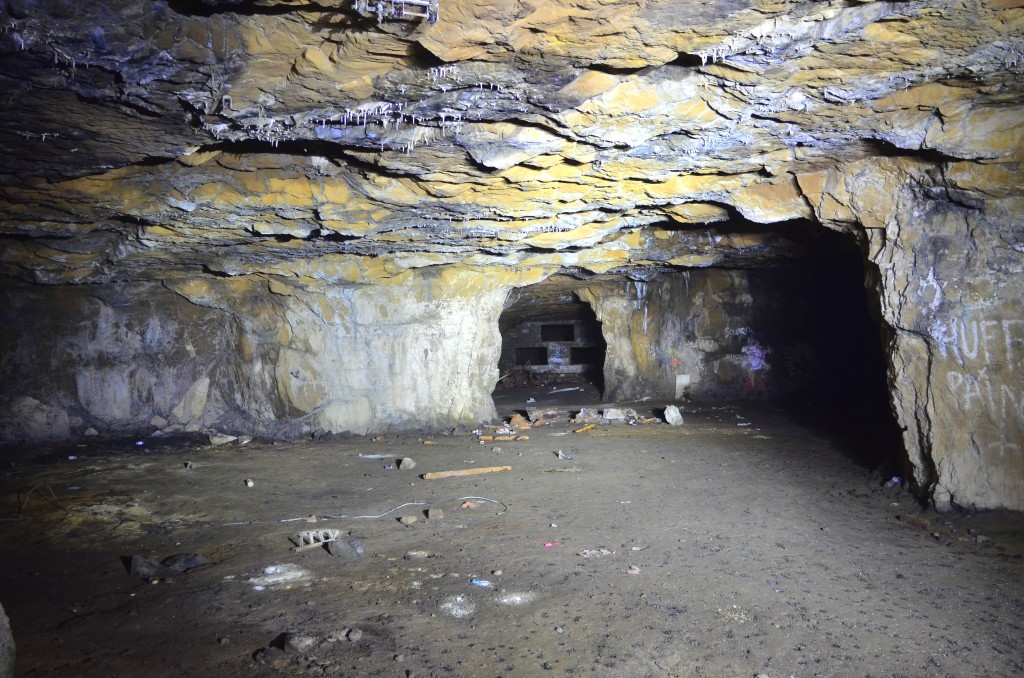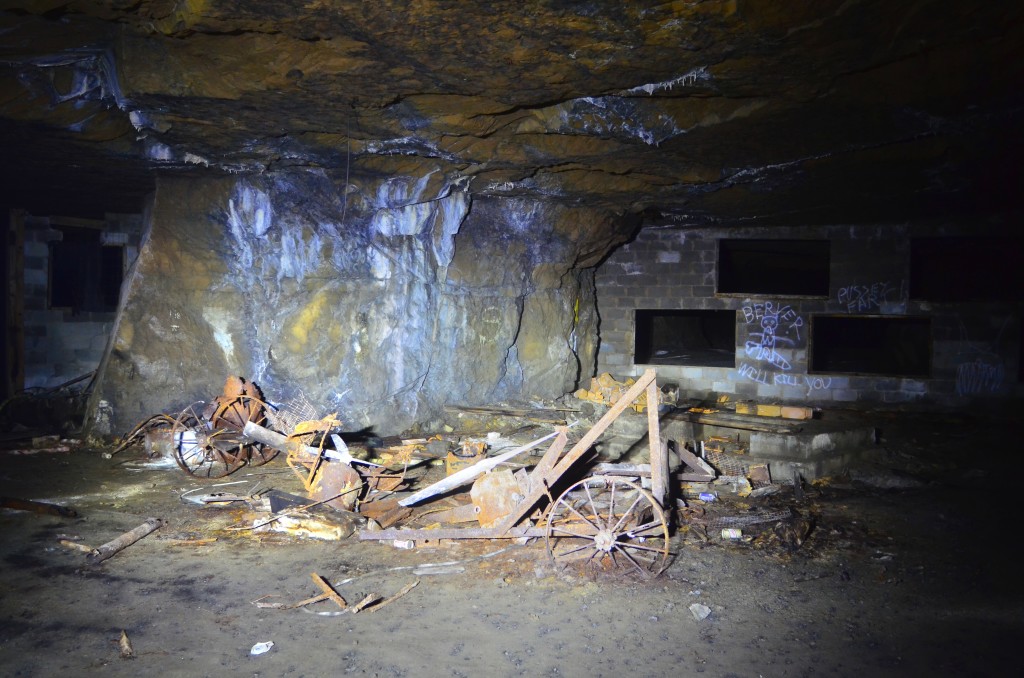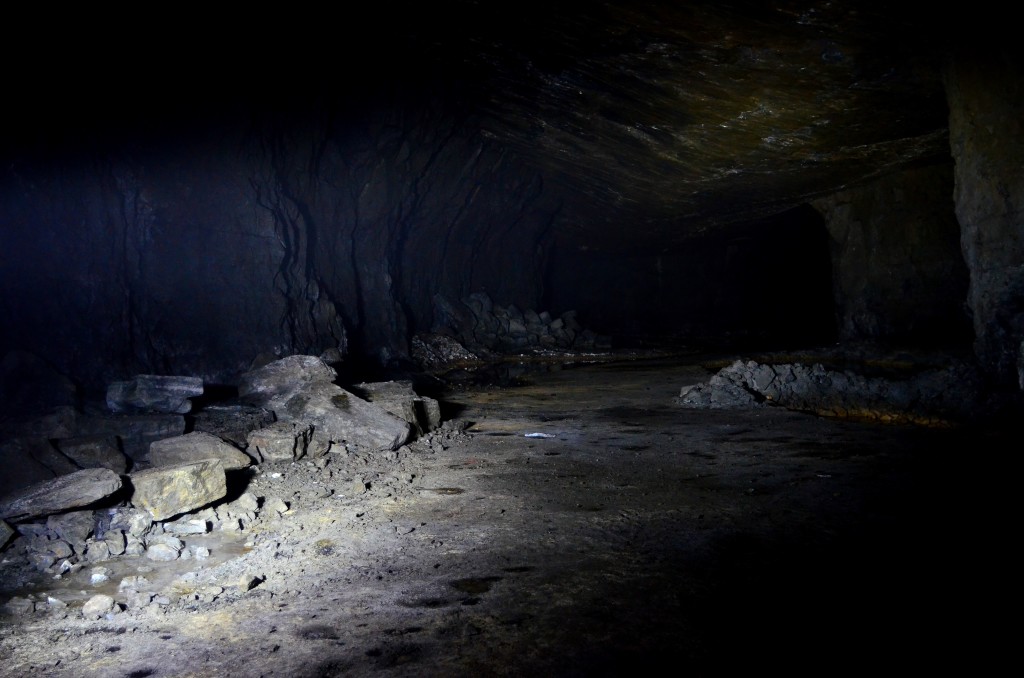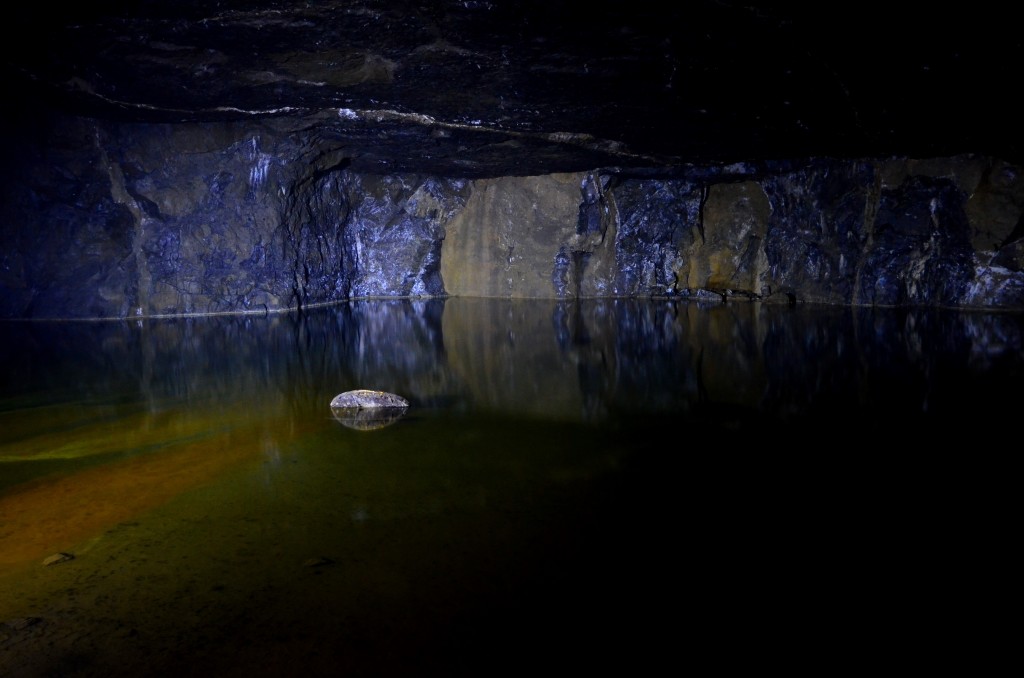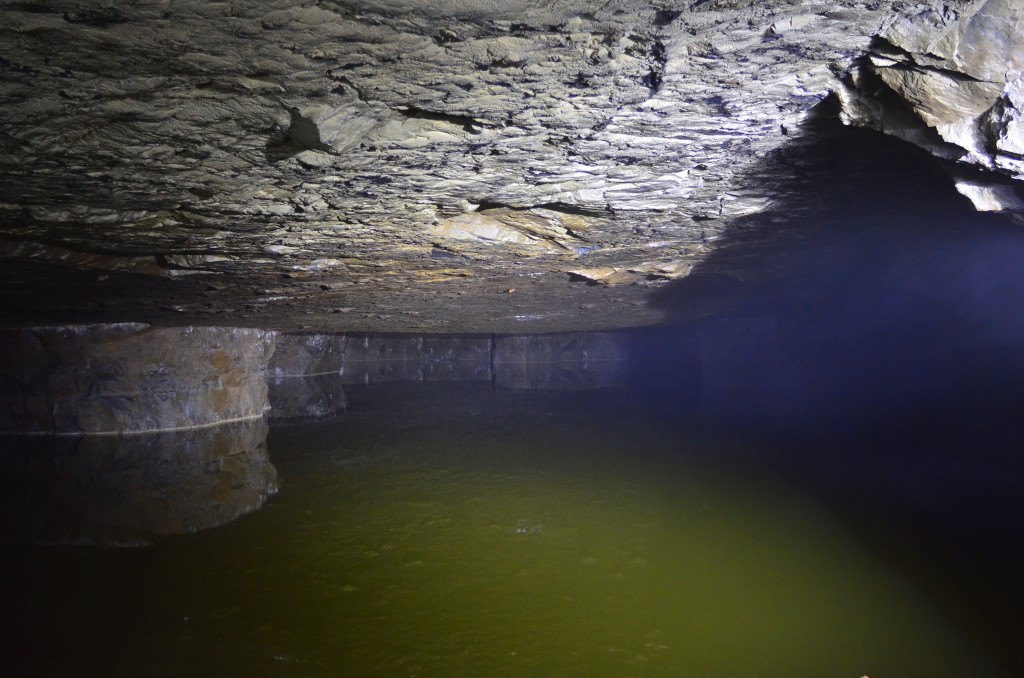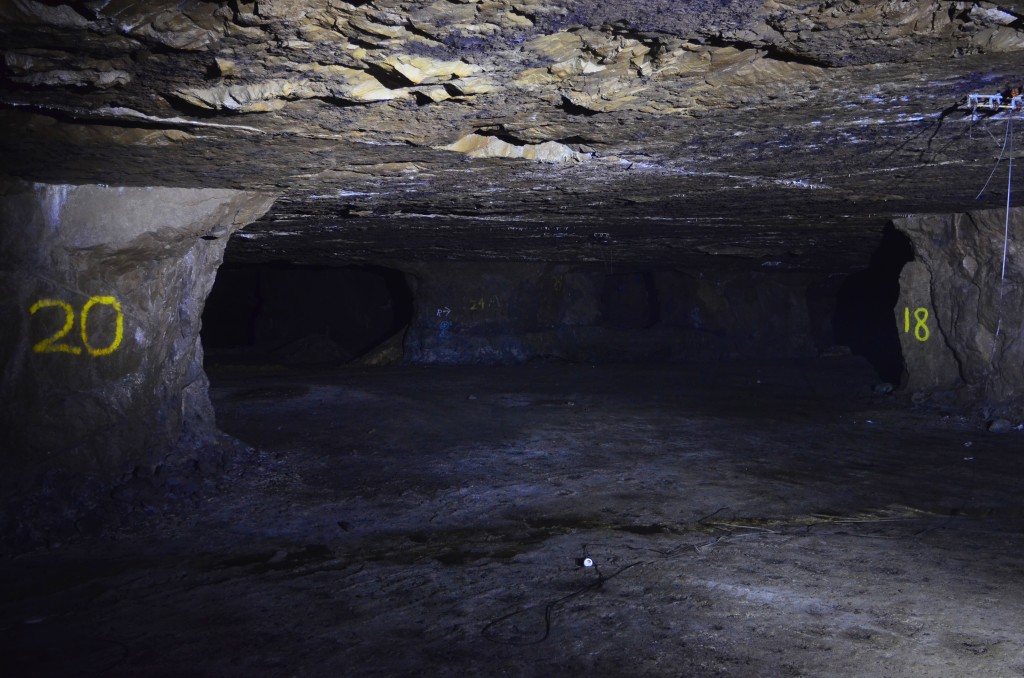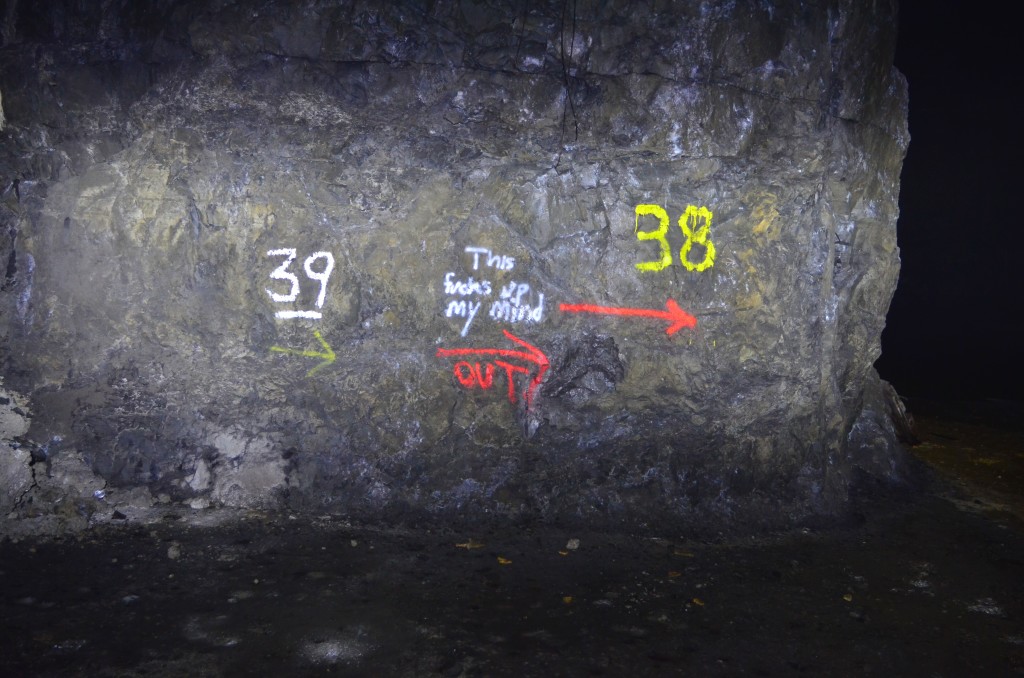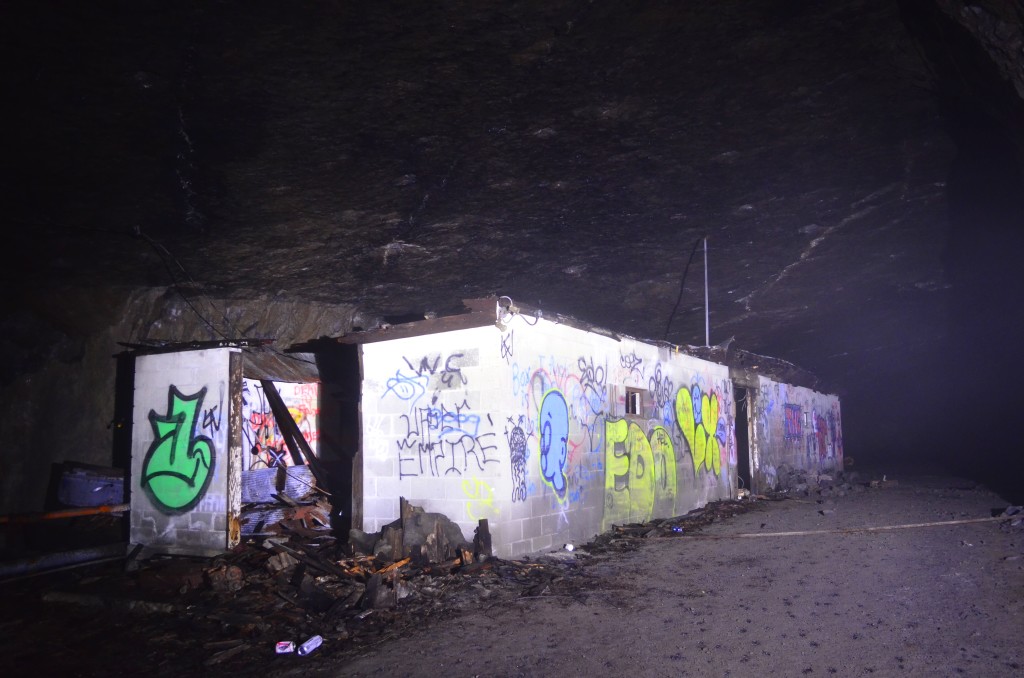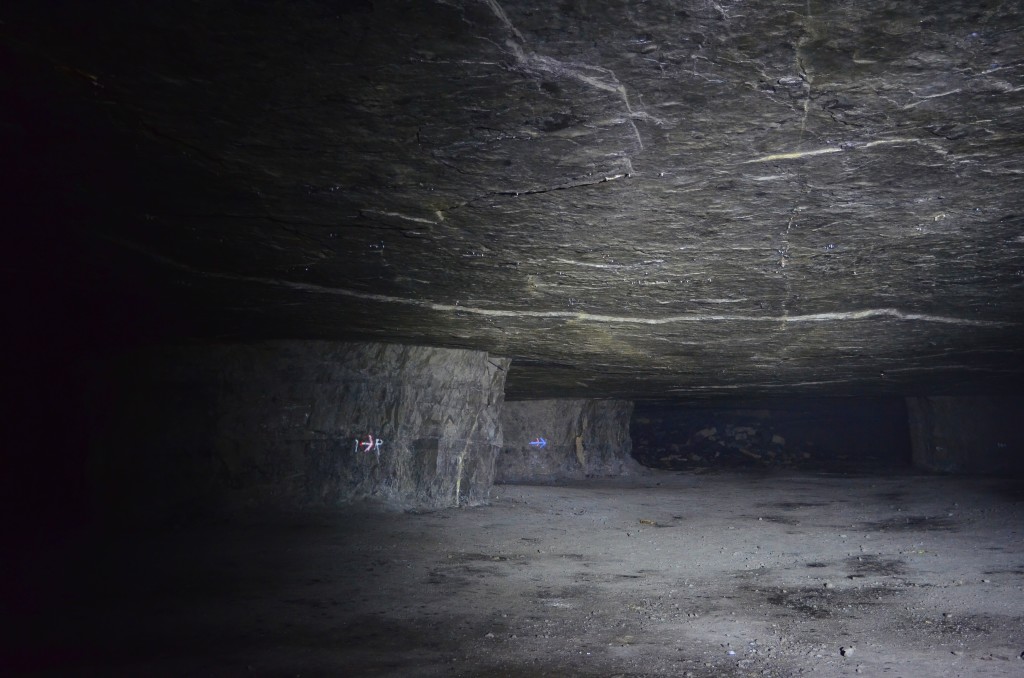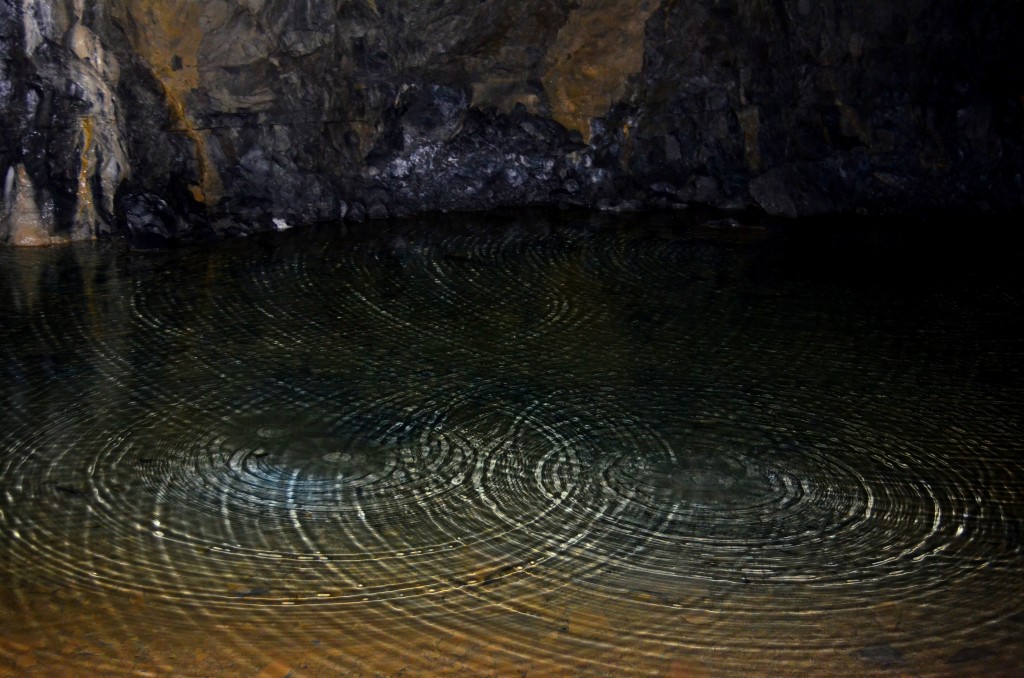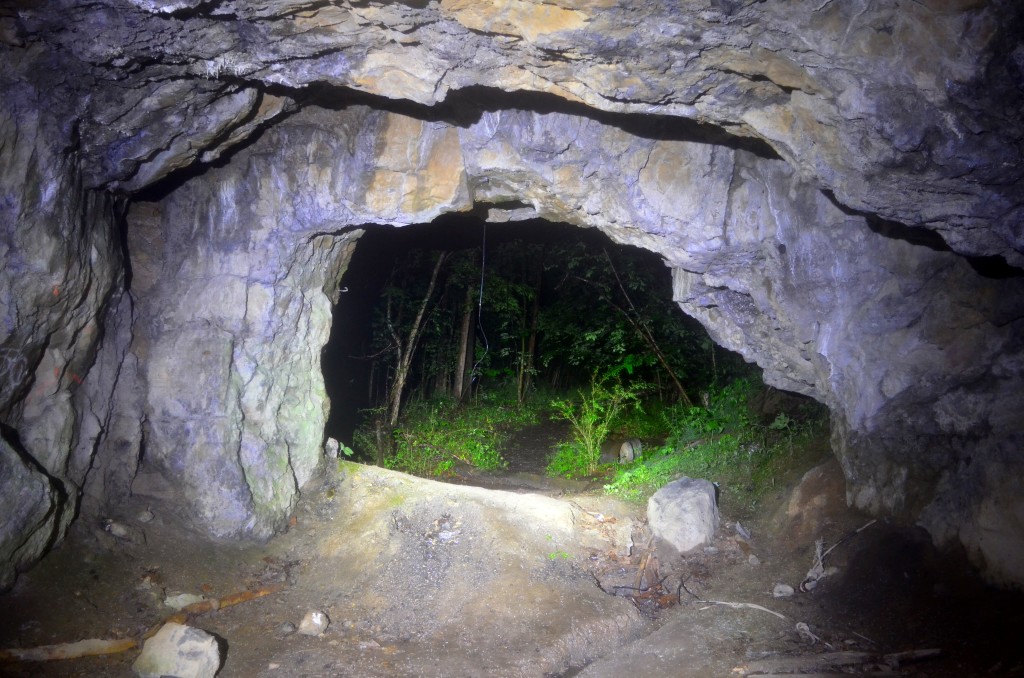Just as we left Albany, the pouring rain actually began falling, as the rest of the group promised as they decided to leave and not even try camping another night. It wasn’t at all how I’d hoped this would go; I barely managed to keep the last meetup together, and this time we only explored one place before falling apart, albeit on mostly good terms. I didn’t really care anymore though, we were still trying to explore, and it doesn’t rain underground. I’d gotten decent directions from one of the cavers I met last month on how to see the Rosendale mines, so even without the 9 people we lost back to New York City, we gave it a try. My first interpretation led us into Widow Jane’s Mine, the touristy one on the property of a museum, made even more touristy by a half-set-up installation art exhibit. I didn’t want to stay too long just in case any of the artists were still around and wondering who would be creeping around the mine, so we tried the other one. I had to ask for directions again when my reading of them led into a deer trail and a swamp, but on the second try we were in.
While the cement supply ran out around 1900, these mines found (and some still have) other uses, being vast underground spaces with miles of passages, and acres of chambers, ranging from dry to flooded to completely underwater. This mine was once the nation’s largest producer of culinary mushrooms. Another one nearby was rumored to be an underground emergency shelter for the state legislature if Albany had to be evacuated — that one is now a data storage center for Iron Mountain, providing something a bit more down-to-earth than a cloud backup.
None of the mushrooms themselves, nor obvious signs of growing them, remain in the mine. However, there is still a slight infrastructure, in the form of downed power lines following some of the walls, and a few pieces of machinery left behind near the entrance.
Beyond that, the mine opens up into a dark, seemingly endless maze.
Not wanting a repeat of my last mine adventure, I approached this one with a working headlamp and fresh batteries, instead of a tiki torch. And this time there were no psychedelically-induced Lovecraftian horrors crunching underfoot with every step. But I still didn’t dare challenge the maze with anything more than the obvious, simple route following along one side of it. Not on a first venture into this particular abyss, and not with someone concerned enough about getting lost to be trying to make arrows in the ground with a tire iron to mark where we have already been.
The boundary, for this time anyway, was usually a shoreline, with flooded passages beyond begging for an inflatable raft, or a hotter day to make swimming in the flood zone more attractive than on this 48-degree rainy night.
The farther in we went, the less flooding there seemed to be, as the air thickened with steam and a miscellaneous sense of going deeper and deeper underground.
Each room was numbered, in more or less increasing order, counting how many chambers were between us and the surface, on a path not entirely different from the one we took to get that far. These markings, however, were far from reliable. This particular set of “OUT” arrows point directly into the mine. I have to wonder if the arrow pointers got lost, or if they were simply sadistic explorers who wanted to keep the less experienced from ever wanting to come back!
About 80 rooms, or nearly a mile, into the mine, there was a “shed” full of machinery. The need for a building in the mine somewhat confused me, with the entire thing already being sheltered from the elements, but it seems to have been a storage area for (mushroom-era?) farm implements of some type.
More troubling, though, was the passage behind this, with rising and falling ramps. Not only is this an enormous maze of twisty passages, but apparently it’s a multi-level vertical maze too! We stayed on the “center” level, and avoided any ramps, trying to keep this adventure relatively short considering we didn’t start until after midnight.
On the way what we thought might be back, we found a spot that appeared to be “raining”. I imagine it was actually cave drips, but it seemed like just the tiniest portal to the outside world, letting in the weather drop by drop.
As we continued, we eventually made our way to the exit — the same exit we came in through, no less — to find it was still pouring rain! I definitely need to go back here though. This was just one level, and counting only the ramps we could see, there are three more below, at least one more above, and plenty of buried river to take a boat out into…
